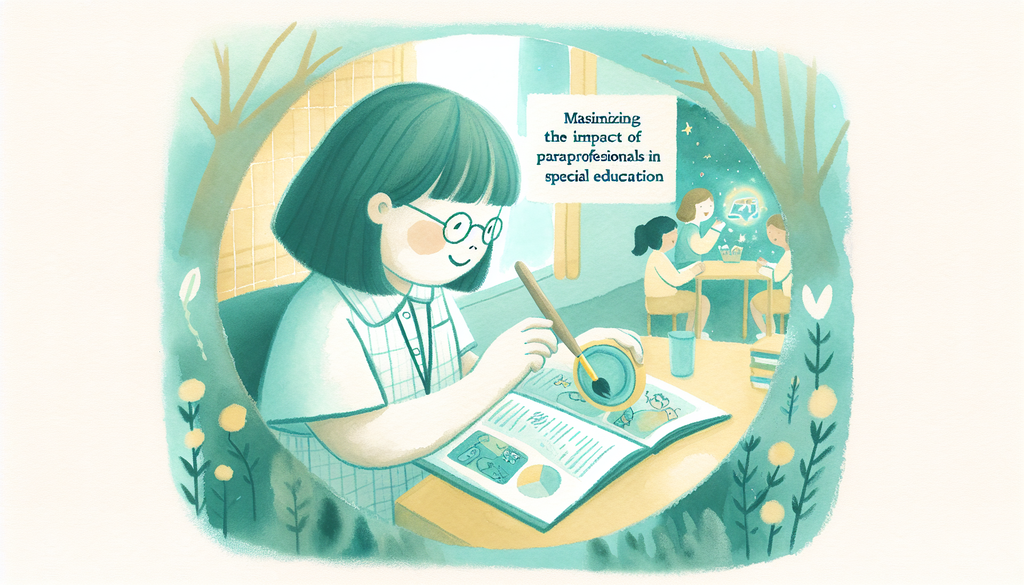Maximizing the Impact of Paraprofessionals in Special Education

For many children with special needs, paraprofessionals serve as crucial mediators of learning in the classroom. These dedicated professionals can often be the key to unlocking a student’s potential, providing personalized attention and nurturing the individual strengths within each child. However, leveraging the skills of paraprofessionals to maximum effect requires a balanced blend of collaboration, training, and strategic assignment. This blog post explores practical ways for educators and parents to enhance the impact of paraprofessionals on student learning.
Paraprofessionals: More Than Just Teacher’s Aides
Paraprofessionals in special education wear many hats. Beyond providing general assistance to teachers in the classroom, they can act as interpreters, adapt lesson plans, implement behavior management strategies, and provide personal care support for students. Most critically, paraprofessionals often engage in direct, one-on-one instruction with special needs students – a crucial lifeline for children who struggle in conventional educational setups [^1^].
The Collaborative Classroom
Teamwork lies at the heart of an effective special education strategy. Open, regular communication between classroom teachers, special education instructors, and paraprofessionals ensures a consistent and united approach to each student’s individual Education Plan[^2^]. This collaborative spirit fosters an environment where every team member’s unique insights can contribute to advancing a student’s goals.
Effective collaboration isn’t just relegated to the school staff - parents and caregivers also play a pivotal role in shaping an educational path that suits the child’s needs. For example, parents and caregivers can actively share information about the child’s routines, preferences, and challenges from the home environment, lending crucial context that can be incorporated into the school program[^3^].
Training and Professional Development
While paraprofessionals are typically required to complete certain educational and experience requirements, there’s always room for growth. Ongoing professional development in targeted areas such as academics, behavior management, and other related topics can significantly enhance a paraprofessional’s toolbox of strategies[^4^].
Additionally, training shouldn’t be a one-size-fits-all approach. Tailored training that acknowledges the unique skills and gaps of each paraprofessional will yield the most impactful results.
Strategic Role Assignment
Paraprofessionals must be strategically assigned to roles where they can use their abilities to the fullest. This may mean matching paraprofessionals with students who benefit most from their specific skillsets, or assigning them to tasks that leverage their existing expertise[^5^].
Conclusion
Paraprofessionals can be integral to the successful functioning of a special education setting. However, harnessing the full potential of these professionals requires intentional, informed strategies that fuse collaboration, ongoing training, and proactive role assignment. Do you have more questions about how to maximize the potential of paraprofessionals? Or perhaps you’re interested in learning more about special education in general? We invite you to explore our other informative posts, such as Understanding Non-Verbal Learning Disability (NVLD) or The Legal Landscape: Your Child’s Rights in Special Education.